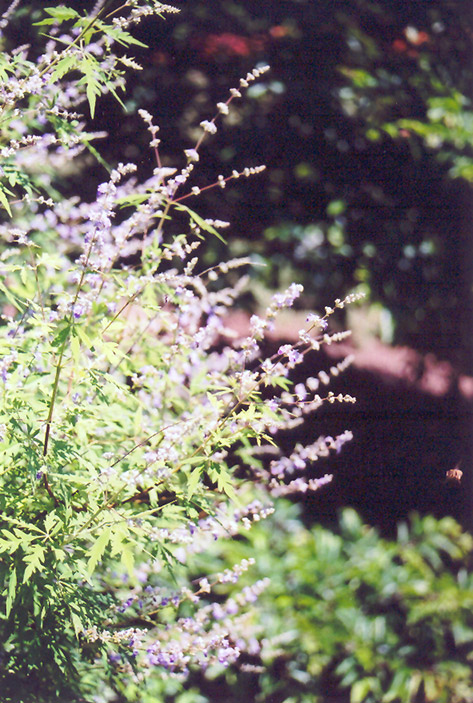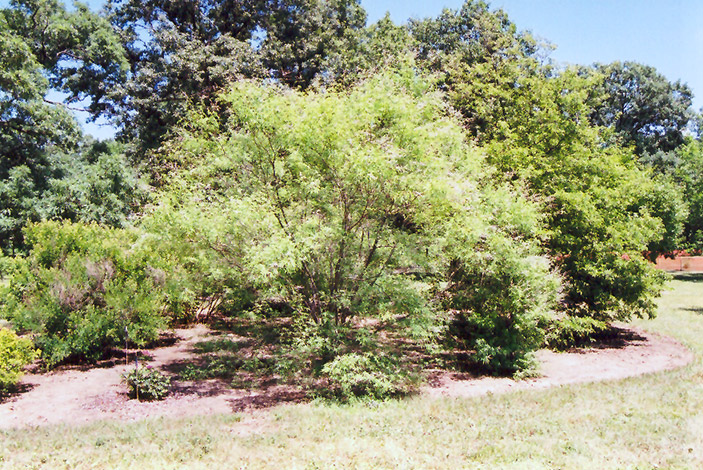>> Home
Height: 12 feet
Spread: 10 feet
Sunlight:
![]()
Hardiness Zone: 6
Description:
An open growing shrub which features lavender flower spikes in summer when few other shrubs bloom, delicate texture in summer; can be treated like a perennial and cut back each spring, as it flowers on new wood and regrows vigorously
Ornamental Features
Chaste Tree has panicles of lilac purple flowers rising above the foliage from mid to late summer. It has grayish green deciduous foliage. The palmate leaves do not develop any appreciable fall color.
Landscape Attributes
Chaste Tree is an open multi-stemmed deciduous shrub with an upright spreading habit of growth. Its relatively fine texture sets it apart from other landscape plants with less refined foliage.
This is a relatively low maintenance shrub, and is best pruned in late winter once the threat of extreme cold has passed. It has no significant negative characteristics.
Chaste Tree is recommended for the following landscape applications;
- Hedges/Screening
- General Garden Use
Planting & Growing
Chaste Tree will grow to be about 12 feet tall at maturity, with a spread of 10 feet. It tends to be a little leggy, with a typical clearance of 2 feet from the ground, and is suitable for planting under power lines. It grows at a fast rate, and under ideal conditions can be expected to live for 50 years or more.
This shrub should only be grown in full sunlight. It is very adaptable to both dry and moist locations, and should do just fine under average home landscape conditions. It may require supplemental watering during periods of drought or extended heat. It is not particular as to soil type or pH. It is highly tolerant of urban pollution and will even thrive in inner city environments, and will benefit from being planted in a relatively sheltered location. This species is not originally from North America.

